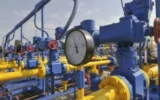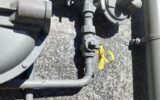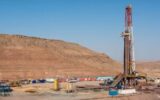
The Vice President of Development and Business of the Persian Gulf Petrochemical Industries Company said: "Continuing the operation of old petrochemical industry units that are 60 years old, without modernization and technological upgrading, will remove them from the cycle of global competition and even profitability."

The Minister of Oil emphasized the need to create a fair competitive environment to attract graduates from all universities to the oil industry, saying: "We are trying to increase the absorption capacity in line with the needs of the oil industry."

The director of the Smart Fuel System, rejecting any reduction in the quota of fuel cards at stations, announced a plan to increase the number of fuel cards for citizens in order to prevent problems in the refueling process.

The Integrated Planning Manager of the National Iranian Gas Company announced: "With timely major repairs, complete coordination of operational departments, and implementation of smart projects, the gas network has been fully prepared for the cold season."

A spokesman for the Tehran Provincial Gas Company announced the gas cutoff for the railway company and the issuance of a warning to the Ministry of Roads and Urban Development on the first day of implementing the special patrols plan for gas consumption management.

The UK Supreme Court has accepted the appeal of the National Iranian Oil Company in the "Oil House" case, a move that could overturn the confiscation ruling issued by lower courts and bring the legal path of the Crescent case to a decisive stage.

The Minister of Energy announced that the 35 percent water waste figure is not accurate and that leak-proofing measures have resulted in a significant reduction.

Tehran Oil Refining experts implemented an innovative plan to return the effluent water from Hydrogen Unit 3 to the consumption cycle after 12 years, saving 112 billion rials annually.

On the eve of the cold season, Pars Oil and Gas Company has advanced a series of its most important development and operational projects to get through the winter with maximum capacity.

The opening meeting of the second phase of the Azar oil field development was held with the presence of senior managers; the goal of increasing daily production to 30,000 barrels was set.










